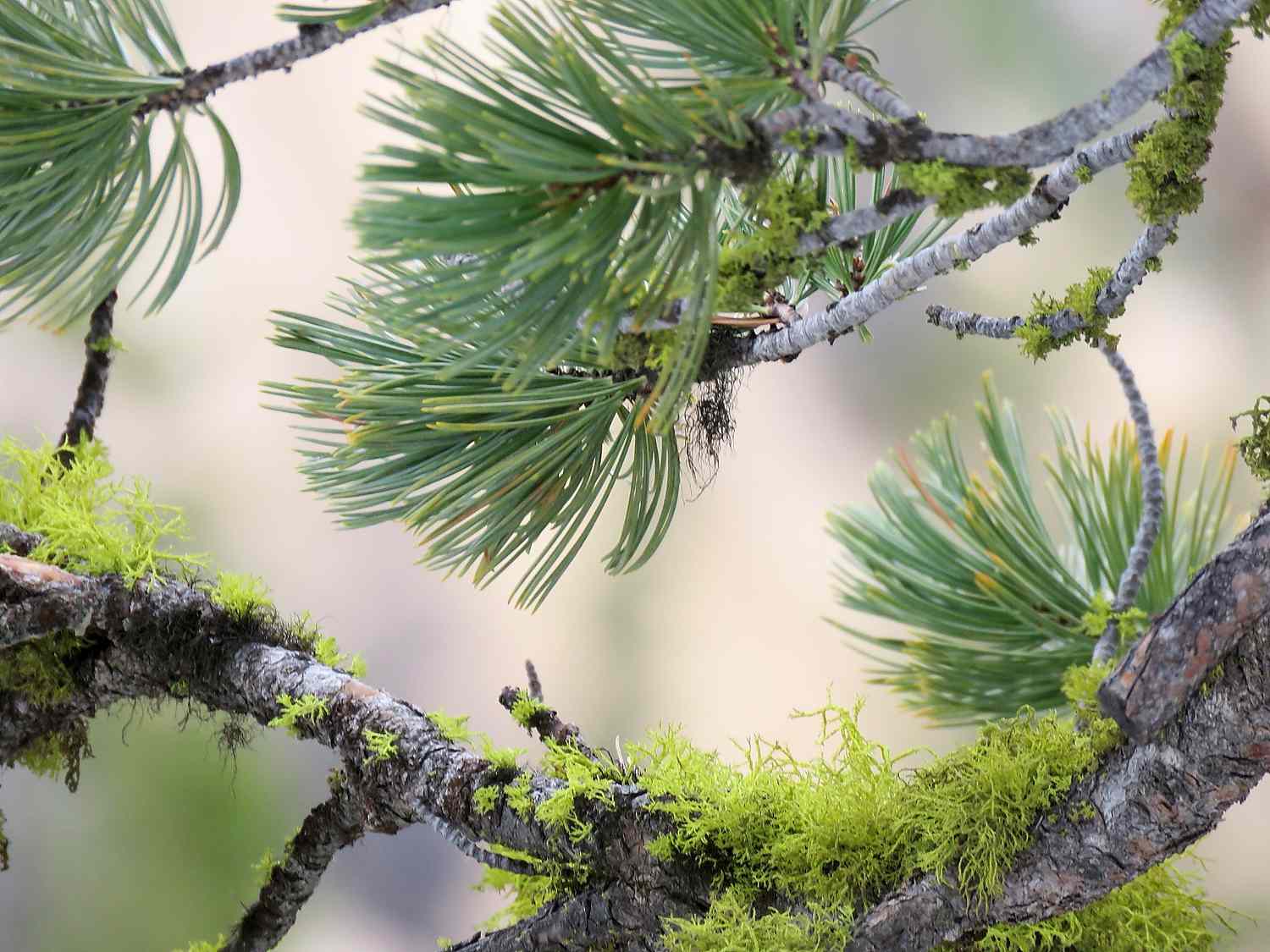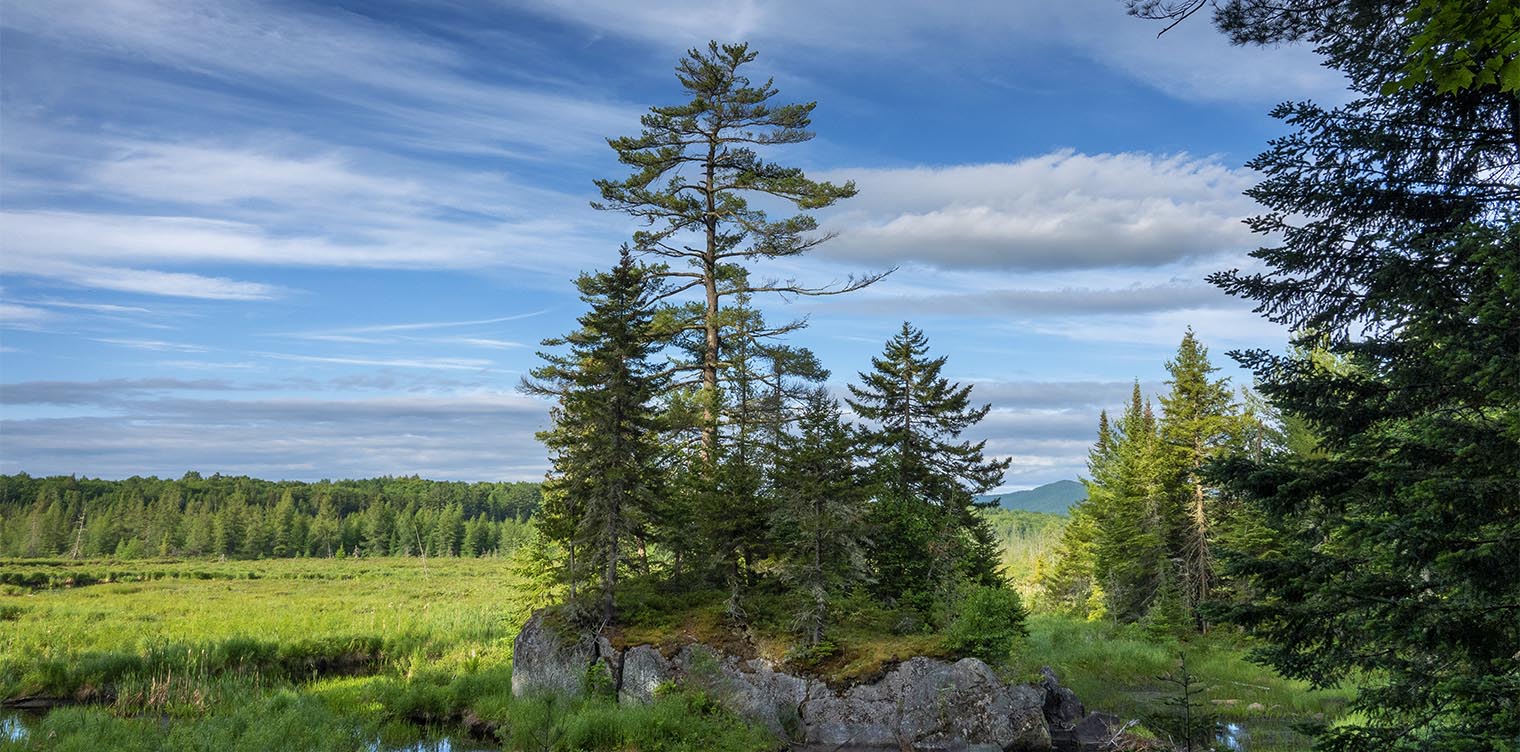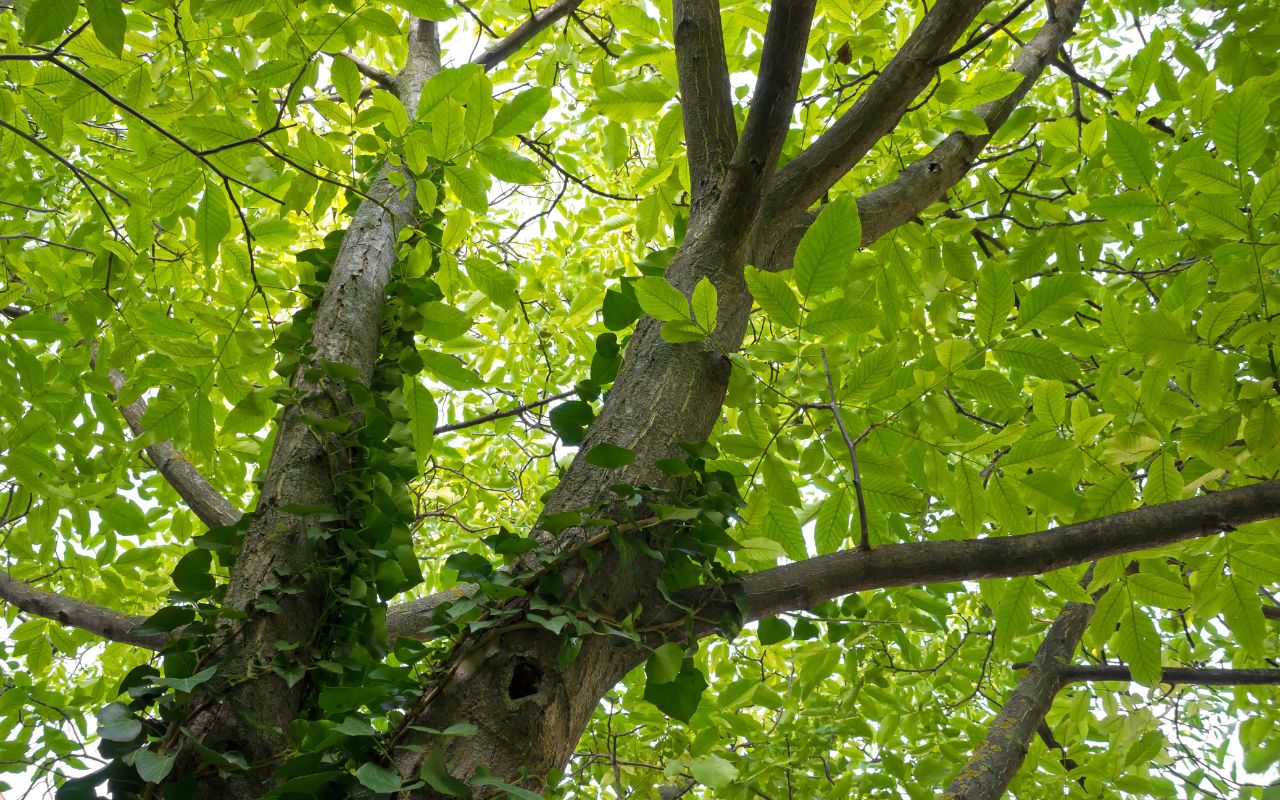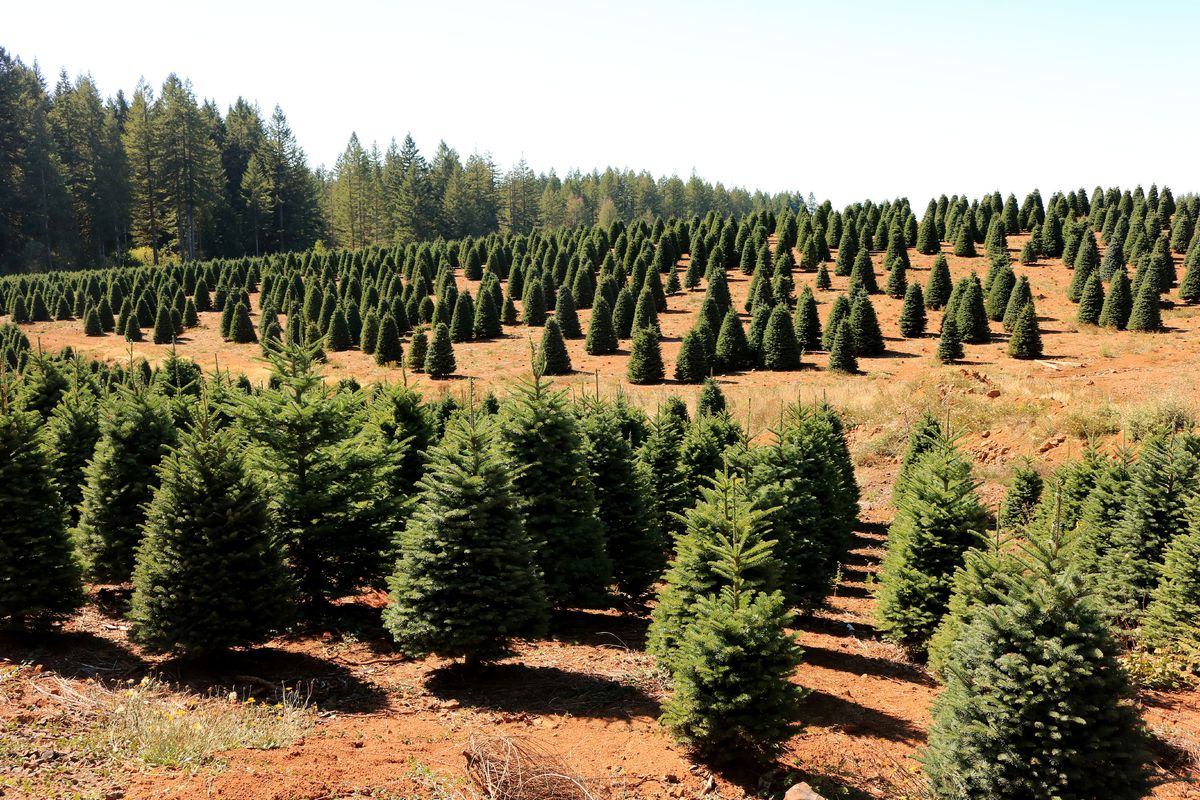Home>Gardening Tips and Tricks>Problem Solving>What Kills Pine Trees Quickly


Problem Solving
What Kills Pine Trees Quickly
Published: November 6, 2023
Discover effective problem solving techniques to quickly address and overcome the issues that can kill pine trees.
(Many of the links in this article redirect to a specific reviewed product. Your purchase of these products through affiliate links helps to generate commission for Chicagolandgardening.com, at no extra cost. Learn more)
Table of Contents
Introduction
A pine tree is a majestic and valuable asset to any landscape. Its towering height, lush foliage, and ability to provide shade and aesthetic beauty make it a cherished feature. However, like any living organism, pine trees are susceptible to various factors that can lead to their untimely demise. It is important for homeowners and landscape enthusiasts to understand the common causes of quick pine tree death to effectively prevent and address these issues.
There are several factors that can contribute to the rapid decline and death of pine trees. These range from fungal infections and insect infestations to environmental stressors and the improper application of chemicals. Identifying the underlying cause of a pine tree’s decline is crucial in determining the appropriate course of action to save it and prevent the spread of the issue to nearby trees.
This article aims to explore the common causes of quick pine tree death and provide insights into the prevention and treatment methods. By understanding the factors that can harm pine trees and taking proactive measures, homeowners and landscapers can ensure the longevity and health of their beloved pine trees.
In the following sections, we will delve into the details of each potential cause of quick pine tree death and discuss practical solutions to combat these issues. By the end of this article, you will have a comprehensive understanding of the common problems that can arise and gain the knowledge needed to address and rectify these issues.
Common Causes of Quick Pine Tree Death
Pine trees are susceptible to various factors that can lead to their sudden and rapid death. Understanding these common causes is essential in identifying and addressing potential issues before it’s too late. Let’s explore the primary reasons behind the quick demise of pine trees:
- Fungal Infections: Pine trees can fall victim to various fungal infections, including root rot and pine pitch canker. These infections can weaken the tree’s roots, compromise its structural integrity, and hinder nutrient uptake. Fungal-infected pine trees often exhibit discoloration, wilting foliage, and the development of cankers on the trunk or branches.
- Pine Bark Beetle Infestation: These tiny insects, such as the mountain pine beetle and the southern pine beetle, can wreak havoc on pine trees. Bark beetles tunnel into the tree’s inner bark, disrupting the flow of nutrients and ultimately killing the tree. Signs of beetle infestation include small holes in the bark, sawdust-like frass, and fading foliage.
- Environmental Stressors: Pine trees can face stress from extreme weather conditions, such as prolonged drought, excessive heat, or severe cold snaps. These stressors weaken the tree’s immune system, making it more susceptible to diseases and insect infestations. Additionally, poor soil conditions, pollution, and improper planting techniques can also contribute to environmental stress.
- Inadequate Nutrients: Pine trees require a balanced supply of essential nutrients, such as nitrogen, phosphorus, and potassium, to thrive. In areas with nutrient-poor soil or when there is a lack of proper fertilization, pine trees can suffer from nutrient deficiencies. This results in stunted growth, yellowing needles, and overall weakness.
- Chemical Damage: The improper use of herbicides, pesticides, or fertilizers can have detrimental effects on pine trees. Overapplication or accidental exposure to chemicals can cause foliage burn, root damage, and even tree death. It is crucial to carefully read and follow the instructions when using any chemical products near pine trees.
These are just a few of the common causes of quick pine tree death. However, it is important to note that each case can differ, and a proper diagnosis by a certified arborist or tree care professional is necessary to determine the exact cause and develop an effective treatment plan.
Fungal Infections
Fungal infections can pose a significant threat to the health and vitality of pine trees. There are several types of fungal diseases that can affect pine trees, including root rot, pine pitch canker, and Diplodia tip blight. These infections can lead to the rapid decline and death of the tree if left untreated.
Root Rot: Root rot is caused by various fungi, such as Armillaria or Phytophthora, that attack the tree’s roots. These fungi thrive in waterlogged soil, causing the roots to decay and become ineffective at absorbing water and nutrients. This leads to wilting foliage, yellowing needles, and eventually the death of the tree. To prevent root rot, ensure proper drainage is in place and avoid over-irrigating the tree’s root zone.
Pine Pitch Canker: Pine pitch canker is caused by the fungus Fusarium circinatum. It infects the tree through wounds in the bark, such as pruning cuts or insect damage. The fungus produces a gummy resin or pitch, hence the name, which can be seen oozing from infected areas. This disease weakens the tree, causing branch dieback, resin-soaked cankers, and ultimately tree death. Regular pruning to remove infected branches and maintaining tree health through proper fertilization and irrigation can help prevent the spread of pine pitch canker.
Diplodia Tip Blight: Diplodia tip blight, caused by the fungus Diplodia pinea, affects the new shoots and cones of pine trees. The infection typically starts at the tips of the branches, causing needles to turn brown and die. Infected cones become discolored and can produce spore-producing structures. Fungicides can be used to control the spread of Diplodia tip blight, and proper pruning practices to remove infected branches is essential in managing the disease.
Early detection and prompt treatment are crucial in managing fungal infections in pine trees. If you suspect a fungal infection, it is recommended to consult with a professional arborist who can assess the situation, provide accurate diagnosis, and recommend appropriate treatment options. When addressing fungal infections, it is important to ensure proper sanitation practices, such as sterilizing pruning tools, to prevent further spread of the pathogen to healthy trees.
Remember, prevention is key when it comes to fungal infections. Maintaining overall tree health through regular inspections, proper watering, and appropriate fertilization can help reduce the risk of fungal diseases. Additionally, promoting good air circulation around the tree and avoiding soil compaction can contribute to a healthier and more resilient pine tree.
Pine Bark Beetles Infestation
Pine bark beetles are tiny insects that can cause significant damage to pine trees, leading to their rapid decline and eventual death. There are several species of bark beetles that infest pine trees, including the mountain pine beetle and the southern pine beetle.
These beetles typically attack weakened or stressed trees, sensing chemical signals emitted by the tree’s defense mechanisms. Once infestation occurs, the beetles burrow into the tree’s inner bark, creating tunnels known as galleries. These galleries disrupt the flow of nutrients and water within the tree, leading to its decline.
Signs of pine bark beetle infestation include small holes in the bark, sawdust-like frass, and fading foliage. As the infestation progresses, the tree’s needles may turn yellow, then red, and eventually brown as the tree dies. It is important to catch bark beetle infestations early to prevent further spread to neighboring trees.
Effective management strategies for pine bark beetles include:
- Monitoring: Regularly inspecting pine trees for signs of bark beetle activity is essential. Look for entrance holes, pitch tubes, and sawdust around the base of the tree. Monitoring can help detect infestations early and allow for prompt intervention.
- Pinewood Nematode Control: The pine wood nematode is a microorganism carried by some species of bark beetles, such as the pine sawyer beetle. This nematode can cause additional damage to pine trees. Controlling the spread of the nematode can involve removing infested trees and properly disposing of the wood.
- Tree Removal and Harvesting: When an infestation has spread extensively or when the tree is beyond saving, removal of the affected tree is necessary to prevent the beetles from infesting healthy trees nearby. Harvesting infested trees can also help mitigate the spread of the beetles.
- Healthy Tree Management: Keeping pine trees in good health is essential in preventing bark beetle infestations. Proper watering, regular fertilization, and appropriate pruning techniques can help maintain tree vigor and make them less susceptible to infestation.
- Chemical Treatments: In severe infestations, chemical treatments may be necessary to control the beetles. Consult with a professional arborist or tree care specialist to determine the most suitable and effective chemical treatment options.
Remember, prevention and early intervention are key in managing pine bark beetle infestations. Maintaining tree health, early detection, and taking appropriate measures can help save pine trees and protect the overall ecosystem they contribute to.
Environmental Stressors
Pine trees, like all plants, can be negatively affected by various environmental stressors. These stressors can weaken the trees, making them more susceptible to diseases, pests, and even death. Understanding and addressing these stressors is crucial for maintaining the health and longevity of pine trees.
Some common environmental stressors that impact pine trees include:
- Extreme Weather Conditions: Prolonged periods of drought, excessive heat, or severe cold snaps can put significant stress on pine trees. Lack of water during drought can hamper the tree’s ability to take up nutrients and photosynthesize, while extreme heat or cold can damage foliage and tissues. Proper irrigation and mulching during dry periods and protecting the tree from extreme temperatures can help alleviate these stressors.
- Poor Soil Conditions: Pine trees thrive in well-drained soil with good fertility. Soil compaction, excessive clay content, or nutrient deficiencies can significantly impact a tree’s health. Improving soil conditions through aeration, adding organic matter, and regular fertilization can help alleviate stress and promote healthier growth.
- Pollution: Air pollution, such as high levels of ozone or pollutants from industrial activities, can damage pine trees. It can lead to foliage discoloration, stunted growth, or even leaf necrosis. Planting pine trees in areas with cleaner air quality or implementing air quality control measures can help mitigate the effects of pollution.
- Improper Planting and Site Selection: Incorrect planting techniques, such as planting too deep or in unsuitable locations, can stress pine trees. Inadequate spacing between trees can also lead to overcrowding and competition for light and resources. Proper planting practices, including choosing the right location and ensuring proper spacing, can help reduce stress and promote healthy growth.
- Non-native Species Competition: Invasive plant species can compete with pine trees for essential resources, such as water, nutrients, and sunlight. It is important to regularly monitor the area surrounding pine trees and remove invasive plants to reduce the stress they impose.
To mitigate the impact of environmental stressors on pine trees, it is essential to implement proper tree care practices. This includes regular monitoring, proper irrigation, mulching, fertilization, and maintaining soil health. Consulting with a professional arborist or tree care specialist can provide valuable guidance in managing environmental stressors specific to your location and tree species.
Remember, by identifying and addressing environmental stressors, you can support the resilience and vitality of your pines, ensuring their survival for years to come.
Inadequate Nutrients
Nutrient deficiencies can have a detrimental effect on the health and vigor of pine trees. These deficiencies can occur when the soil lacks essential nutrients or when the tree is unable to absorb and utilize nutrients effectively. It is important to recognize the signs of inadequate nutrients in order to provide the necessary supplementation and support for healthy growth.
Pine trees require a balanced supply of essential nutrients, including nitrogen (N), phosphorus (P), potassium (K), and micronutrients such as iron (Fe) and manganese (Mn), to thrive. When these nutrients are deficient, pine trees can exhibit a range of symptoms:
- Pale or yellowing foliage
- Stunted growth
- Thin or sparse canopy
- Premature needle drop
- Reduced cone production
If nutrient deficiencies are suspected, a soil analysis can help identify the specific deficiencies and guide appropriate supplementation. Soil amendments and fertilizers can be applied to replenish deficient nutrients and improve overall tree health. It is crucial to follow recommended application rates and timing to prevent overfertilization, which can be harmful to pine trees.
When applying fertilizers, it is beneficial to use slow-release formulations to provide a steady supply of nutrients over time. This helps avoid nutrient leaching and reduces the risk of excessive nutrient uptake by the tree. Additionally, organic sources of nutrients, such as compost or well-rotted manure, can improve soil health and nutrient availability in a more sustainable manner.
Proper watering practices are also important for nutrient uptake. Pine trees require regular deep watering, especially during periods of drought, to ensure that nutrients are readily available. Avoid overwatering, as it can lead to waterlogging and exacerbate nutrient deficiencies.
Regular monitoring and maintenance are essential to prevent and address nutrient deficiencies in pine trees. Consulting with a professional arborist or horticulturist can provide valuable insight into the specific nutrient requirements of your pine trees and guidance on appropriate fertilization practices.
Remember, maintaining adequate nutrient levels is vital for the health and vitality of your pine trees, enabling them to withstand environmental stressors and thrive in their surroundings.
Chemical Damage
While chemicals can be beneficial when used correctly, improper application or exposure to certain chemicals can cause severe damage to pine trees. Herbicides, pesticides, and fertilizers, if used incorrectly, can lead to leaf burn, root damage, and even the death of the tree. Understanding the potential risks and adopting responsible practices can help protect pine trees from chemical damage.
Here are some common causes of chemical damage to pine trees:
- Overapplication: Applying excessive amounts of chemicals, such as herbicides or fertilizers, can overwhelm the tree’s ability to handle the substances. This can lead to foliage burn, wilting, and long-term damage. It is crucial to carefully follow the manufacturer’s instructions and use the recommended dosage for the specific tree species and target pest.
- Accidental Exposure: Pine trees can be unintentionally exposed to chemicals intended for nearby areas. This can occur through drift during application or improper handling of chemicals near the tree. Even small amounts of chemical exposure can have detrimental effects on pine tree health. It is important to take necessary precautions, such as using barriers or shields during application, to prevent accidental exposure to chemicals.
- Chemical Compatibility: Mixing incompatible chemicals, such as herbicides and phenoxy-based growth regulators, can result in chemical reactions that harm pine trees. Always read the labels and consult with professionals to ensure that the chemicals used are compatible and safe for the intended application.
- Soil Contamination: Chemicals can accumulate in the soil over time, leading to long-term damage to pine trees. This can occur when chemicals are applied excessively or repeatedly, or when they have a long persistence in the soil. It is important to be mindful of the potential buildup of chemicals in the soil and avoid over-reliance on chemical treatments.
To mitigate the risk of chemical damage to pine trees, follow these best practices:
- Read and follow the manufacturer’s instructions carefully when using any chemical product near pine trees.
- Use targeted, spot treatments instead of blanket applications to minimize chemical exposure.
- Avoid applying chemicals during periods of high wind or when rain is expected to prevent drift and runoff.
- Use physical barriers or shields to protect pine trees from accidental exposure during chemical applications in nearby areas.
- Consider alternative methods, such as organic or biological controls, as a safer and more environmentally friendly approach to managing pests.
If chemical damage occurs, it is important to consult with a professional arborist or tree care specialist for guidance on appropriate remedies and treatments. They can provide expert advice on mitigating the damage and helping the tree recover.
Remember, responsible chemical use and proper precautions are essential in ensuring the health and vitality of pine trees while minimizing the risk of chemical damage.
Prevention and Treatment Methods
Preventing and treating issues that can lead to the quick death of pine trees requires proactive measures and timely intervention. By taking the following prevention and treatment methods into account, you can safeguard your pine trees and promote their overall health and longevity.
Regular Inspections: Conducting regular inspections of your pine trees can help detect early signs of problems, such as fungal infections or insect infestations. Look for changes in foliage color, wilting, or unusual growth patterns. Catching issues early allows for prompt action.
Proper Planting and Maintenance: Ensure that pine trees are properly planted in suitable locations and in well-draining soil. Provide adequate spacing between trees to promote good airflow. Regular pruning and removal of dead or diseased branches can prevent the spread of problems and improve tree health.
Watering and Fertilization: Provide your pine trees with appropriate watering and fertilization. Deep watering during dry periods, allowing the soil to dry slightly between waterings, can encourage deep root growth and drought resistance. Additionally, proper fertilization based on soil analysis can help provide essential nutrients for tree health.
Pest Control: Implementing proactive measures to control pests, such as regular monitoring and the use of biological controls or targeted treatments, can help prevent severe infestations. Consult with a professional to determine the most effective pest control methods for your specific situation.
Proper Chemical Use: When using chemicals near pine trees, always read and follow the instructions on product labels carefully. Use appropriate protective measures to prevent accidental exposure. Avoid overapplication and be mindful of chemical compatibility to minimize the risk of chemical damage.
Timely Treatment: If you notice any signs of fungal infections, insect infestations, or other problems, seek professional assistance. Certified arborists or tree care specialists can provide accurate diagnosis and recommend appropriate treatments, such as targeted insecticide applications or fungal treatments.
Tree Removal: In cases where a pine tree is severely compromised and poses a risk to surrounding trees or property, tree removal may be necessary. Hiring a professional tree removal service ensures the safe and proper removal of the tree.
Remember, prevention is the best approach to maintaining the health and vitality of your pine trees. By implementing proactive measures, conducting regular inspections, and seeking professional help when needed, you can ensure the longevity and beauty of your cherished pine trees.
Conclusion
Pine trees are remarkable assets to any landscape, providing shade, beauty, and environmental benefits. However, they are not immune to various factors that can lead to their rapid decline and death. Understanding the common causes of quick pine tree death and implementing preventive measures is crucial for maintaining their health and longevity.
Fungal infections, pine bark beetle infestations, environmental stressors, inadequate nutrients, and chemical damage are among the primary culprits that can threaten the well-being of pine trees. Early detection and prompt intervention are essential in addressing these issues effectively.
Proactive measures such as regular inspections, proper planting and maintenance, adequate watering and fertilization, and responsible chemical use can significantly reduce the risk of problems and promote the overall health of your pine trees. Consulting with certified arborists or tree care professionals can provide expert guidance and ensure proper diagnosis and treatment.
By implementing preventive techniques and promptly addressing any issues that arise, you can protect your pine trees from untimely death and enable them to thrive in their environment. Remember, the health and vitality of our cherished pine trees depend on our vigilance and care.










